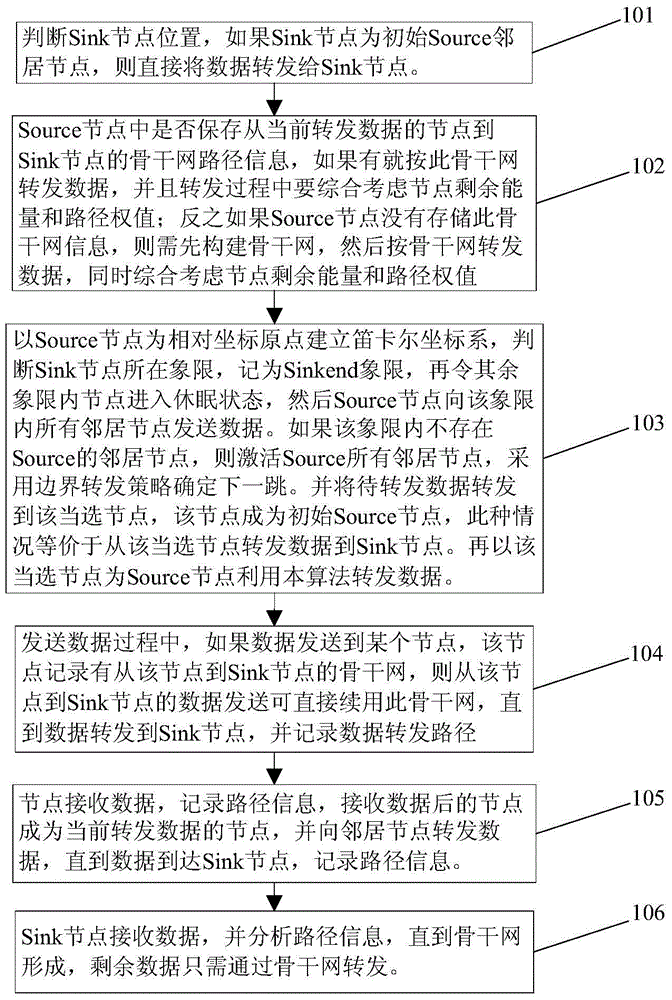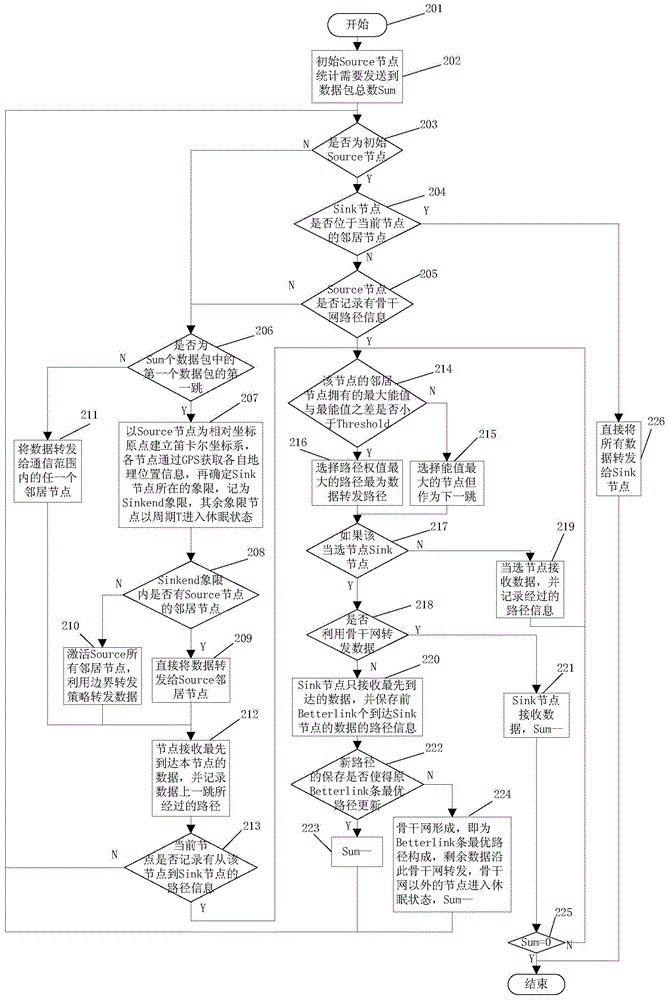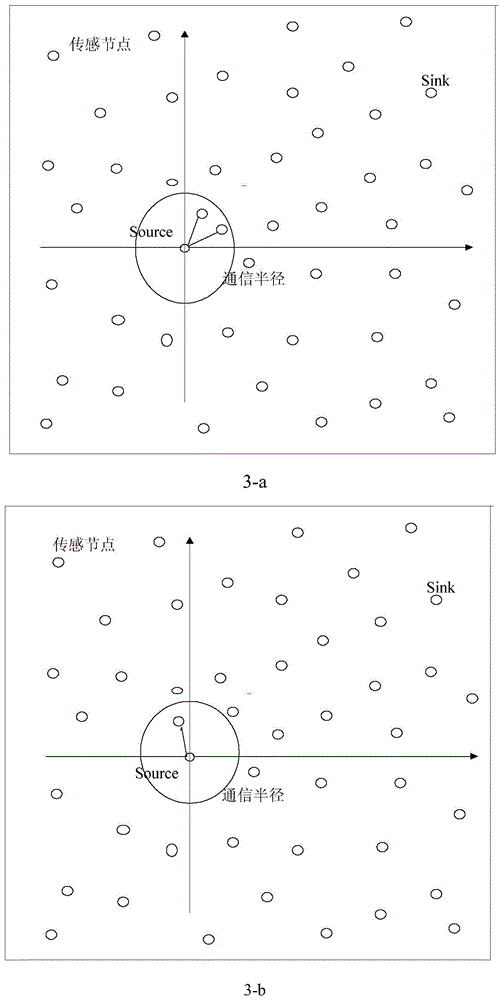A Biologically Inspired Adaptive WSN Routing Algorithm
A biologically-inspired and self-adaptive technology, applied in advanced technology, electrical components, network topology, etc., can solve problems such as easy failure of nodes, reduction of algorithm robustness, and damage to WSN connectivity, etc., to achieve large and efficient data transmission , the effect of high transmission efficiency
- Summary
- Abstract
- Description
- Claims
- Application Information
AI Technical Summary
Problems solved by technology
Method used
Image
Examples
Embodiment 1
[0024] Embodiment 1 illustrates the process of this algorithm as a whole (as figure 1 ),details as follows:
[0025] 101: Determine the position of the Sink node, if the Sink node is the initial Source neighbor node, directly forward the data to the Sink node;
[0026]102: Whether to save the backbone network path information from the Source node to the Sink node in the Source node, if so, forward the data according to this backbone network, and comprehensively consider the remaining energy of the node and the path weight during the forwarding process; otherwise, if the Source node does not store For this backbone network information, it is necessary to build the backbone network first, and then forward the data according to the backbone network, while comprehensively considering the remaining energy of the node and the path weight;
[0027] 103: Establish a Cartesian coordinate system with the Source node as the relative coordinate origin, determine the quadrant where the Si...
Embodiment 2
[0032] The present invention describes a bio-inspired adaptive wireless sensor network (WSN) routing algorithm, including the following steps:
[0033] S1: If the Sink node is the initial Source node, the initial Source directly forwards the data to the Sink node;
[0034] S2: Conversely, if the Sink node is not a neighbor node of the initial Source node, forward data along the backbone network from the initial Source node to the Sink node;
[0035] Further, the backbone network forwarding data from the initial Source node to the Sink node, the acquisition process of the backbone network is:
[0036] S21: The initial Source node judges whether the backbone network information from the Source node to the Sink node is recorded in its current memory, and if there is such record information, continue to use this backbone network to forward data;
[0037] S22: If there is no record information, it is necessary to establish a Cartesian coordinate system with the initial Source node...
PUM
 Login to View More
Login to View More Abstract
Description
Claims
Application Information
 Login to View More
Login to View More - R&D
- Intellectual Property
- Life Sciences
- Materials
- Tech Scout
- Unparalleled Data Quality
- Higher Quality Content
- 60% Fewer Hallucinations
Browse by: Latest US Patents, China's latest patents, Technical Efficacy Thesaurus, Application Domain, Technology Topic, Popular Technical Reports.
© 2025 PatSnap. All rights reserved.Legal|Privacy policy|Modern Slavery Act Transparency Statement|Sitemap|About US| Contact US: help@patsnap.com



